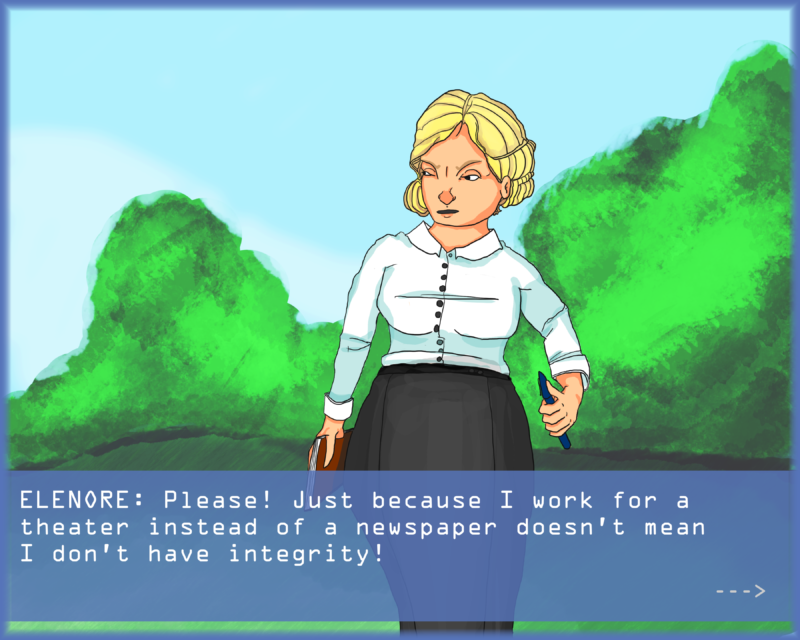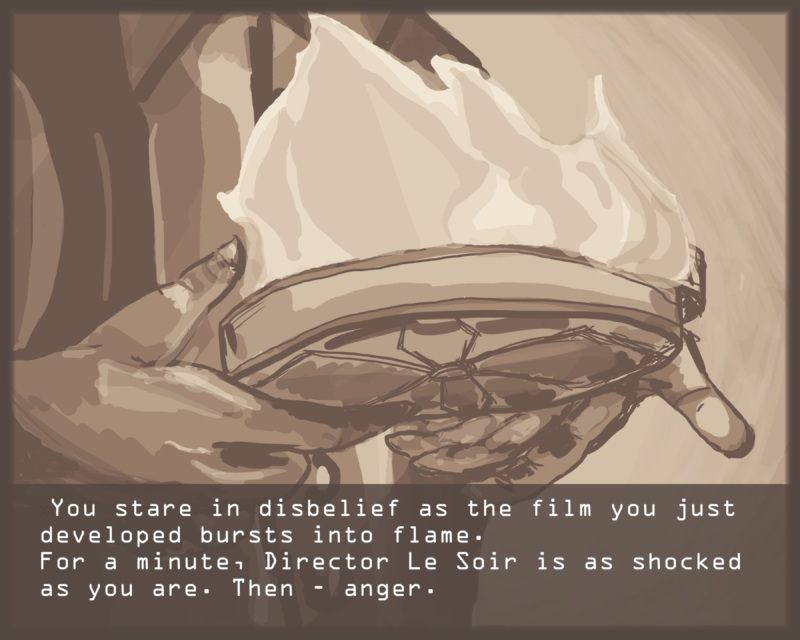[Editor’s Note: This is a piece reflecting on the process of making a video game that reflects the film history of New Orleans. The video game was never completed but the process reflects the aims and scope of the Collat Media Project, a Tulane program to empower women to code. It was originally published on March 21, 2013]

A example of a background used by Louisiana Lou. Photo by Grace Baker.
For a while now, I’ve had the pleasure of working on the videogame Louisiana Lou. Louisiana Lou is a set in 1910’s New Orleans, and the idea is that after playing the game people will be inspired to learn more about the NOLA 1910’s film industry. I was thus confronted with how to make my game as immersive as possible, and deciding on how to create the scenery for the game was a key part of this.
The way Louisiana Lou is set up is that every time you speak to a character you see both the character’s image and the background of whatever location you’re visiting at the moment. Thus, if you were playing a level at the Times Picayune Office or City Park, in the background you might see the inside of the office, or a tree. This meant that in theory you could just insert actual photographs taken from the time period behind the characters.
However, there were two problems with this. The first was the more basic one: I wasn’t guaranteed to find the photos that I actually needed. Even if a photo was taken at the correct location, it often wasn’t of high enough quality to use. Many of the photographs I came across had either been shrunk down when they were posted online or when they’d been used in a book or photographs decades ago. Next to the simple, clean graphics of my game, any blurriness or pixilation would be glaring.

A scene done in a different style. Photo by Grace Baker.
The second and more pressing issue was copyright infringement. In most cases it was downright impossible to get the rights to use an original photograph in a game. Generally it was because rights to the photograph were expensive; sometimes, however, I didn’t even know who to begin contacting if I wanted the rights. In any case, paying for the rights to every background would be an astronomical cost, and it just wasn’t an option.
My first idea – to color the photographs using Photoshop – was ultimately impractical. While modifying photographs is a great way of getting around the copyright issue, it took a long time to color the photos and the end result, while surreal, didn’t capture what I wanted for the videogame. It was scrapped, and instead I began painting the scenes. This too is slow, but will hopeful yield the results I’m after.
 NOLAbeings Multimedia artist Claire Bangser created NOLAbeings as a portrait-based story project that marries...
NOLAbeings Multimedia artist Claire Bangser created NOLAbeings as a portrait-based story project that marries...  Voodoo in New Orleans: Reviving history: New Orleans fortune telling This article takes a deep dive into the history of Voodoo in New Orleans, its hybridization with Catholicism, and its present-day place in the city's culture. The author visits fortune-tellers in the French Quarter, using their guidance as a tool for introspection rather than a deterministic predictor of the future. Through her experiences in New Orleans, the author feels a mystical connection to both the past and the future.
Voodoo in New Orleans: Reviving history: New Orleans fortune telling This article takes a deep dive into the history of Voodoo in New Orleans, its hybridization with Catholicism, and its present-day place in the city's culture. The author visits fortune-tellers in the French Quarter, using their guidance as a tool for introspection rather than a deterministic predictor of the future. Through her experiences in New Orleans, the author feels a mystical connection to both the past and the future. 